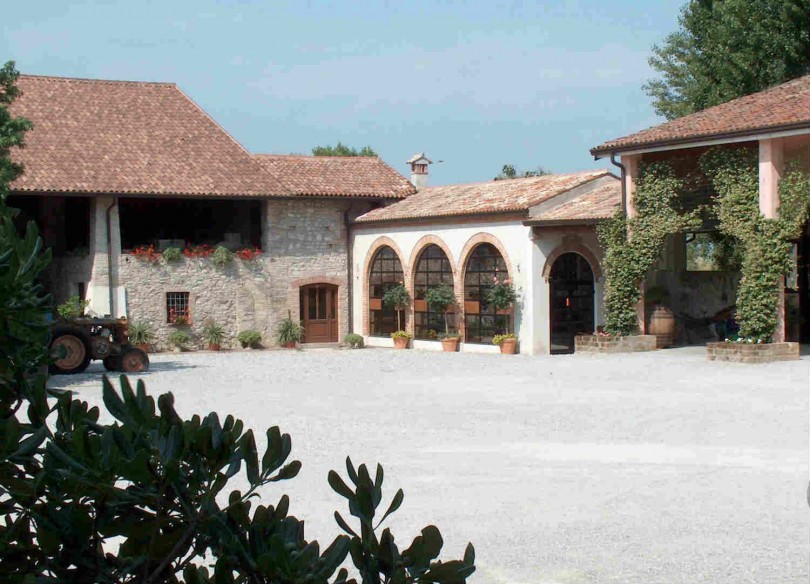It’s one of the wineries which have become the symbol of the #savelugana campaign: the route of the TAV, the high-speed train which for years has been discussed in Italy, should pass right in the heart of Tenuta Roveglia, a Pozzolengo winery which has been active since the 30ies thanks to the iniziative of a Swiss industrialist, Federico Zweifel, and has since 1985 been directed by Paolo Fabiani, in the past also president of the Consortium of the Lugana, tha famous Garda white wine.
“Our company would be heavily involved in the Tav project, which is now useless because older than 25 years – explains Fabiani- 5 or 6 hectares of vineyards would be expropriated, and as for the central farm that dates back to 1500, we are discussing the opportunity to move it about 15 -20 meters inward, demolishing it brick by brick to rebuild it with the same materials. ”
It may sound incredible, but this would be just the one, glaring solution to safeguard and preserve the historic core of this estate of 102 hectares in the municipality of Pozzolengo, initially a traditional Lombardy farmhouse with families of sharecroppers that only in the 80’s, after further acquisitions , has been converted to quality viticulture by Annarosa Zweifel, grandson of the founder, and her husband Giovanni Felice Azzone.
Over time, Tenuta Roveglia has steadily grown: today it has a vineyard of 85 hectares, 80 of which are planted with Lugana, and five with by red grapes. Through a series of agreements with neighboring producers, the controlled hectares become 110 in total, for a production of about 700,000 bottles a year. The range includes 4 types of Lugana: the basic Limne represents a share of 90% of the total Lugana (which in turn covers 95% of global production of the company), but there are other niche labels such as the reserve Vigne di Catullo and the “vendemmia tardiva” Filo di Arianna which are very well known by connoisseurs. There are also a sparkling Charmat method and two reds (Cabernet Sauvignon and Merlot) in addition to a Chiaretto.
“Limne means clay soil near the lake in ancient greek- Fabiani explains -. And this is one of the primary components that have made Lugana such a unique wine. Over the years we have managed to get across the message that the Trebbiano di Lugana has its particular characteristics that distinguish it from other strains of the Trebbiano family, but the peculiarity of our wine also comes from its clay soil and unique microclimate. ”
The enormous success of the Lugana in recent years has had in Tenuta Roveglia a major player, with annual exponential growth of 10-20% and a market that now focuses on export for about 80% of the business. “The boom of this wine, it should be remembered, started outside Italy, in particular in Germany, which is also our first market – explains Fabiani – The international markets have been the first to aknowledge the characteristics of flavor, texture and longevity of Lugana “.
In short, Tenuta Roveglia is a case history that began long ago, on which today hangs the shadow of a work on which the judgment of Fabiani is really heavy. “The actual project of the Tav, conceived today, would have no meaning – says -. You can not expect the world to go back 25 years. Yet there seems to be no way to stop the building of this structure, even though everybody knows from the start that it doesn’t make sense: and this is the worst thing. We’ll continue to hope until the end, although it seems clear now there is nothing left to do but try to mitigate or buffer the devastating impact that the work could have on our business. ”
The bottle.
The most representative wine of Tenuta Roveglia in numerical terms is definitely the Limne. If instead you’re looking fot potential longevity or structure then the label to choose is the Vigne di Catullo Reserve, which comes from eight precious hectares where the vineyards are over 55 years of age and the production does not go beyond 60-70 quintals hectare against 110 plots of average younger plants, ensuring high grades, particularly complex structure and great minerality: the oldest plants have a root system that goes fishing deeper, where the typical clay territories of Lugana are almost white because rich in limestone, ensuring a great extraction of mineral salts. The Vigne di Catullo, after soft pressing, remains on the lees for four months, then in steel for two years and it rests in bottle for a further six months before coming on the market. It may prove surprising even after many years of refinement.
Try also the vendemmia tardiva Filo D’Arianna: it passes in large wooden barrels for 15-16 months, and can be a revelation with foie gras or raw fish.


Leave a Comment